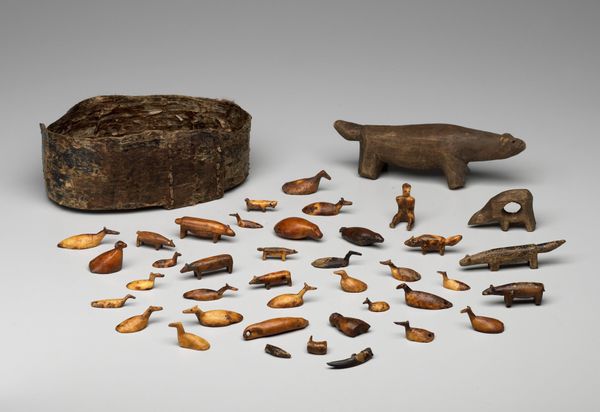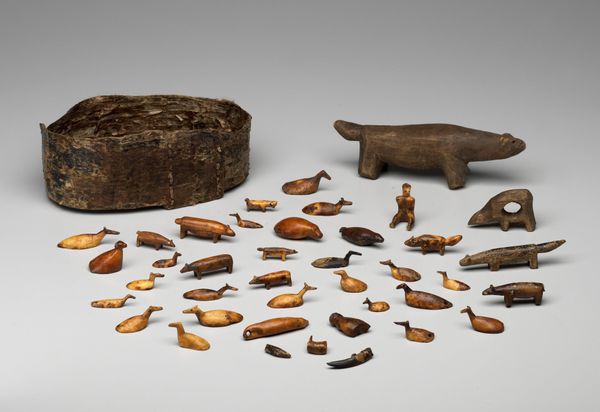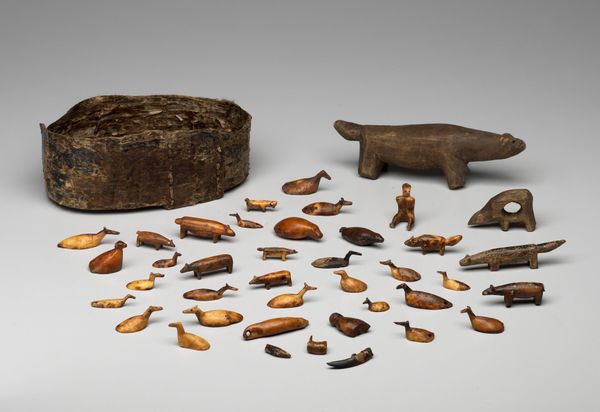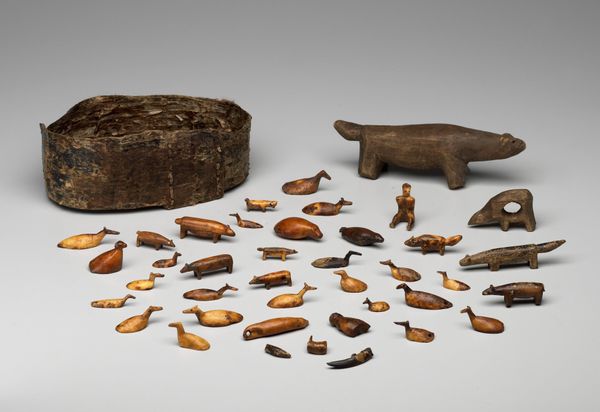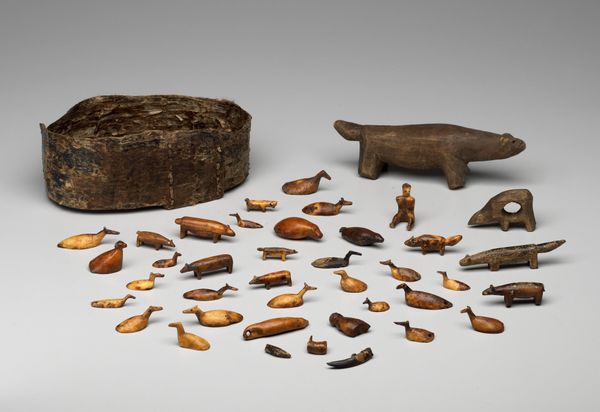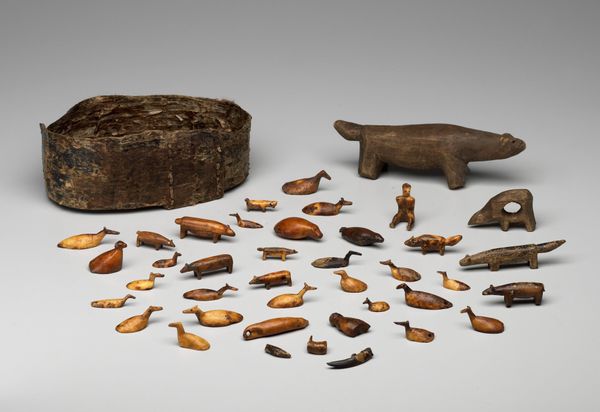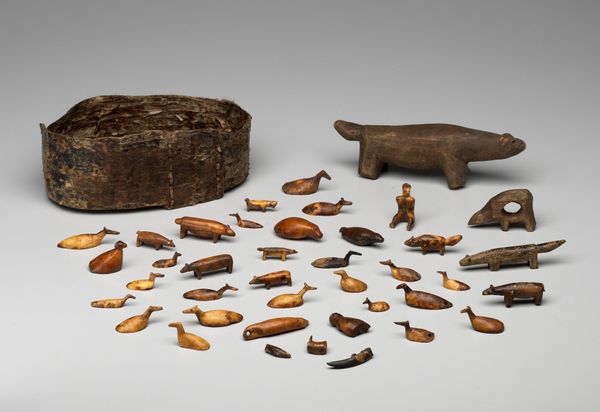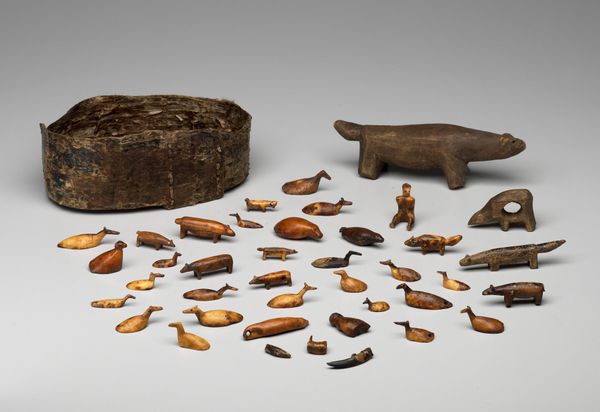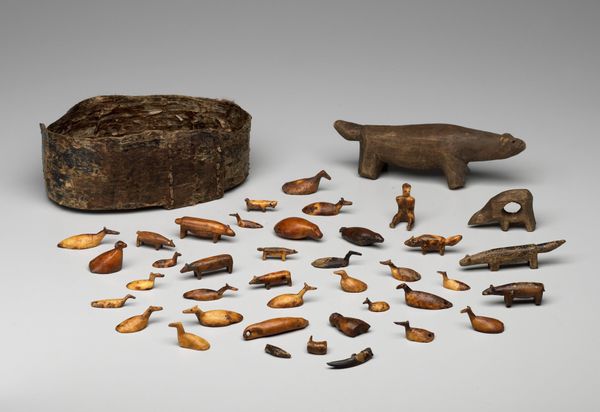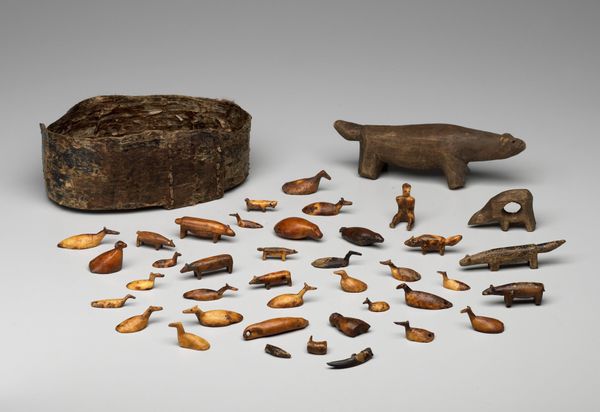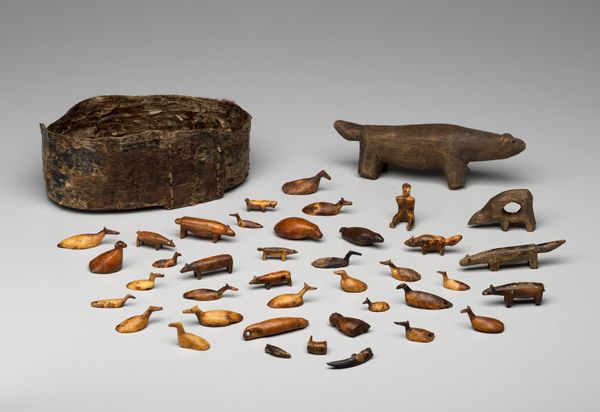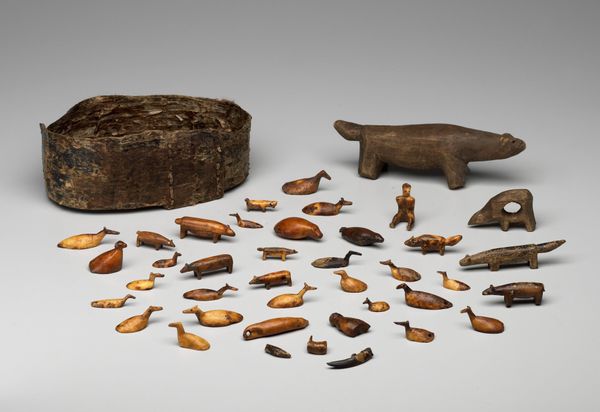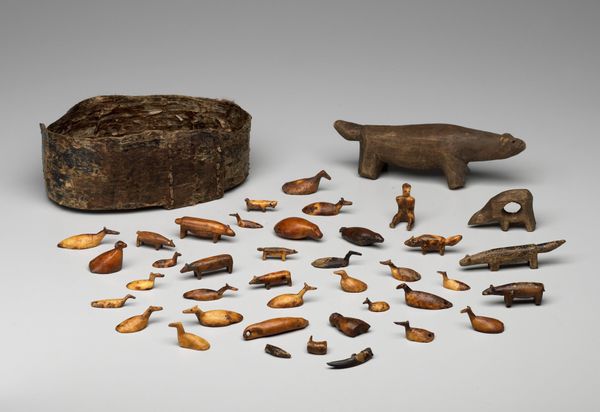
carving, sculpture, wood
#
carving
#
figuration
#
sculpture
#
wood
#
miniature
#
indigenous-americas
Dimensions: 1 1/2 x 2 1/4 x 9/16 in. (3.81 x 5.72 x 1.43 cm)
Copyright: Public Domain
Curator: This intriguing assemblage before us is titled "Quadruped." The Minneapolis Institute of Art dates its creation to before 1500. The Inuit crafted this collection using wood. Editor: Immediately, there’s something inherently whimsical and even melancholic about these miniature figures. They are presented altogether but their display creates this atmosphere of something between a memory box, an archeological dig, or even a collection of ritual fetishes. Curator: That's perceptive. As a collection of wooden miniatures originating from Inuit culture, “Quadruped” occupies an important position in our understanding of representation and objecthood for indigenous groups across the Americas. Think about how folk art often functions as a repository for cultural memory, storytelling, and community identity. How do these factors contribute to or change our reading of it? Editor: They remind us that representation of the world around us – animals, spirits, the elements – has always been critical for cultural expression. The focus on animals feels very specifically tuned to questions of subsistence and relation to the land itself, almost as a form of ecological recognition. Are they venerated or consumed? It feels as if these wooden miniatures were not simply created as objects, but with the goal to encapsulate the life, importance, and presence of the entities they portray. Curator: Absolutely, these could act as intermediaries, especially since their compact size enabled ease of movement and constant presence. These considerations open doors for considering indigeneity in contrast with issues like globalization, ecological devastation, and power. When these pieces find their way into museum settings like this, the dynamic can change—potentially shifting their perceived utility. Editor: I agree completely; it is our challenge as audiences today to reconcile a modern understanding of them, contextualized and influenced through systems of museums and other institutions, to better understand the spirit in which these wooden figures were originally created and used by the Inuit people centuries ago. There’s a kind of silent dignity in that challenge. Curator: Indeed, a testament to the enduring power of art objects to connect us across time and cultures, reminding us of the complex interplay between heritage, interpretation, and the ongoing dialogue between past and present.
Comments
No comments
Be the first to comment and join the conversation on the ultimate creative platform.
